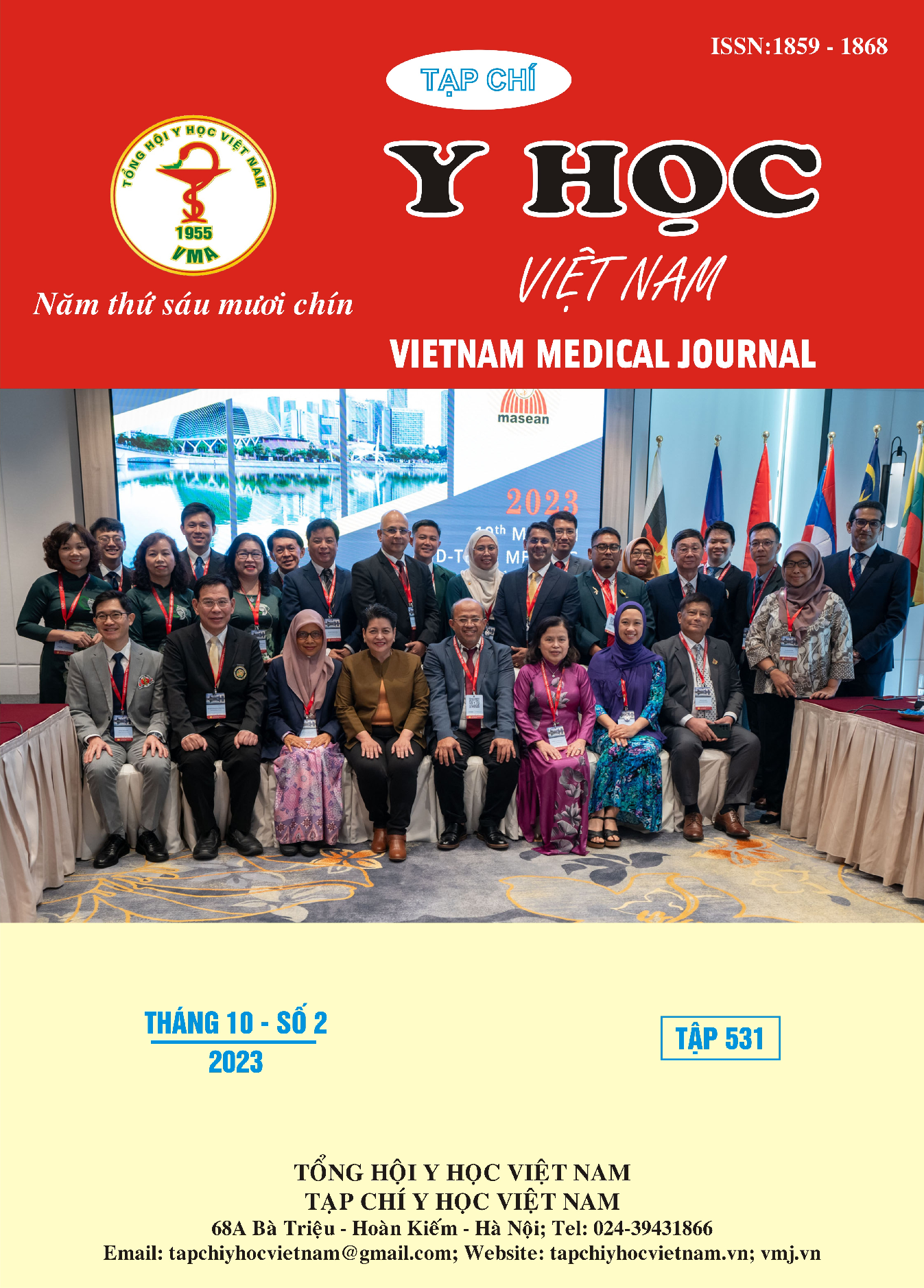EXAMINING OF THE TRADITIONAL MEDICINE PATTERN OF HYPERTENSION IN THE OLDER ADULTS AT THE NATIONAL HOSPITAL OF TRADITIONAL MEDICINE
Main Article Content
Abstract
Objective: Examining of the traditional medicine pattern of hypertension in the older adults at the National hospital of Traditional medicine. Subjects and methods: A cross-sectional descriptive study was conducted from December 2022 to June 2023 among 105 hypertensive patients at Internal Medicine Department, Gerontology Department, Acupuncture Department of the National hospital of Traditional medicine. Results: The mean age is 76,50 ± 7,78. Female/male ratio is 2/1. The prevalences of Traditional medicine syndrome were liver-kidney yin deficiency syndrome (56,2%), Phlegm – Dampness syndrome (24,8%), ascendant hyperactivity of liver yang (14,3%), Yin and Yang deficiency syndrome (4,8%). The typical symptoms to classify the disease are encountered with a high rate, especially the symptoms of pulse and tongue. The systolic blood pressure (SBP), diastolic blood pressure (DBP) and mean pulse rate at admission were 147,32±11,42 mmHg, 85,43±8,66 mmHg, 80,64±10,82bpm. SBP and pulse are highest in the ascendant hyperactivity of liver yang. DBP is highest in the Phlegm-wetness. SBP, DBP and pulse are lowest in the Yin and Yang deficiency syndrome. Common comorbidities are stroke, dyslipidemia and coronary artery disease. Injury to the heart and brain accounted for the largest proportion in the liver-kidney yin deficiency syndrome and Yin and Yang deficiency syndrome. Kidney damage accounted for the largest proportion in the Yin and Yang deficiency syndrome.
Article Details
Keywords
hypertension, the traditional medicine pattern
References
2. Wenger N.K., Arnold A., Bairey Merz C.N. và cộng sự. (2018). Hypertension Across a Woman’s Life Cycle. J Am Coll Cardiol, 71(16), 1797–1813.
3. Deepa M., Pradeepa R., Anjana R. và cộng sự. (2011). Noncommunicable Diseases Risk Factor Surveillance: Experience and Challenge from India. Indian J Community Med, 36(Suppl1), S50–S56.
4. Trần Thúy (2018). Học thuyết tạng tượng. Nội kinh. Nhà Xuất Bản Y học, Hà Nội, 74–77.
5. 姗喻 và 光季 (2018). 中医对高脂血症的研究进展. Traditional Chinese Medicine, 07, 307.
6. Thâu Dụ, Quang Quý (2018). Sự phát triển trong nghiên cứu của Y học cổ truyền đối với Rối loạn lipid máu. Traditional Chinese Medicine, 07, 307.
7. Ngô Quý Châu (2020). Tăng huyết áp. Bệnh học nội khoa (Tập 1). Nhà xuất bản Y Học, Hà Nội, 200–226.
8. Mennuni S., Rubattu S., Pierelli G. và cộng sự. (2014). Hypertension and kidneys: unraveling complex molecular mechanisms underlying hypertensive renal damage. J Hum Hypertens, 28(2), 74–79.


